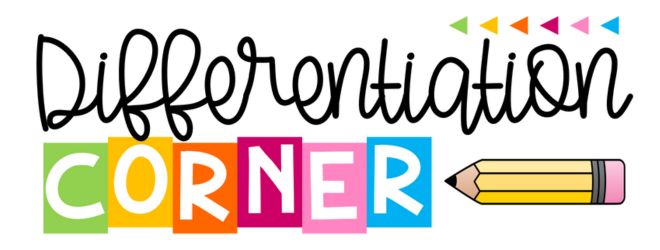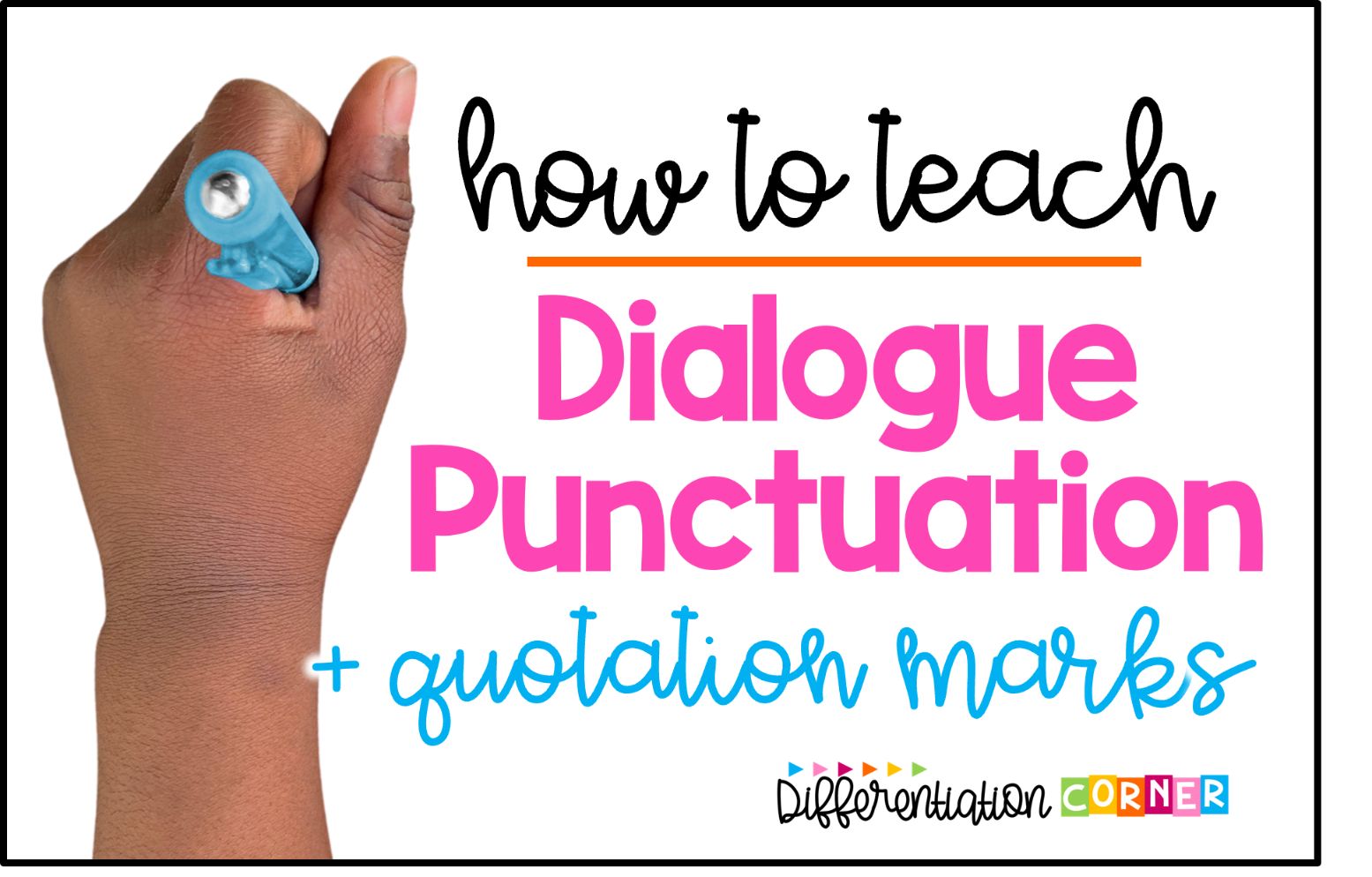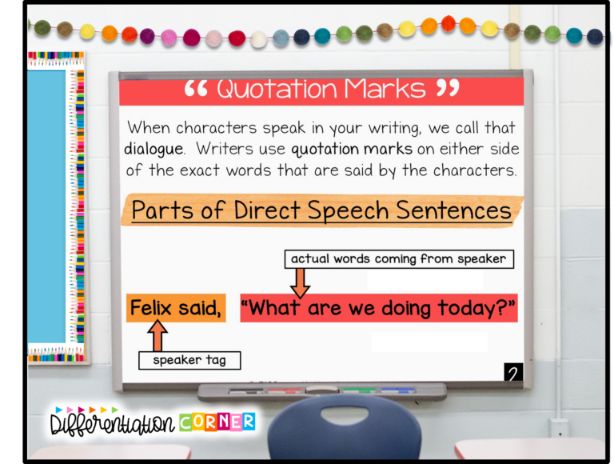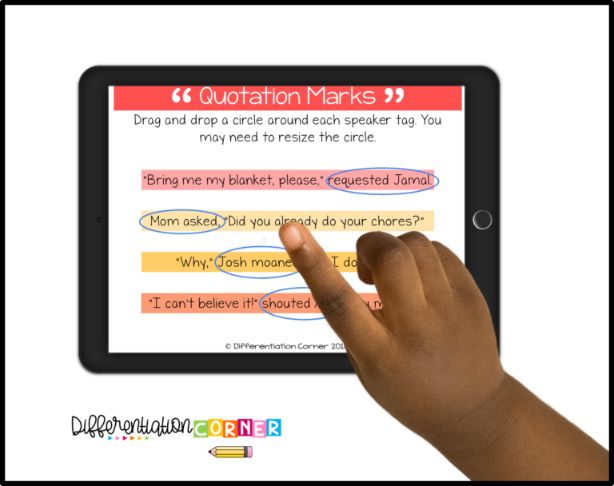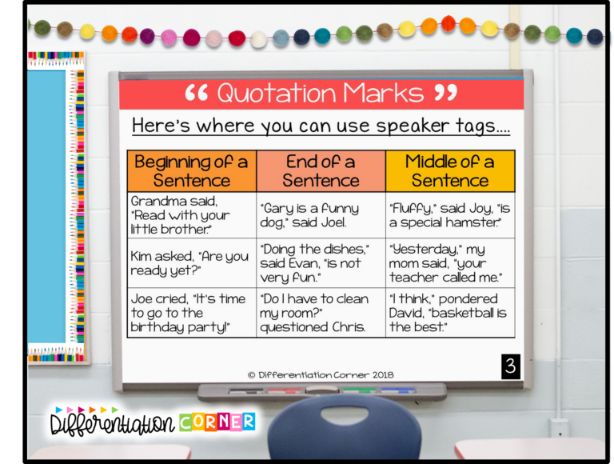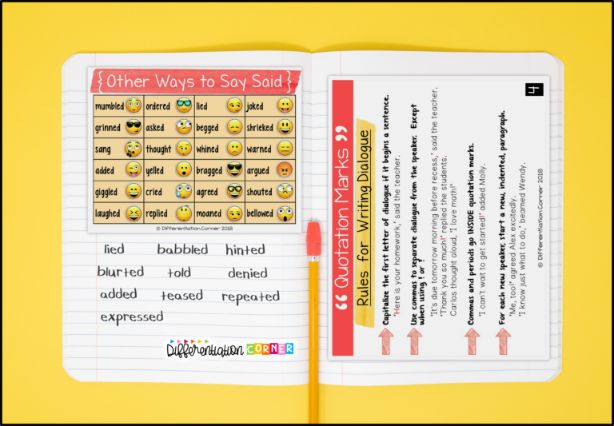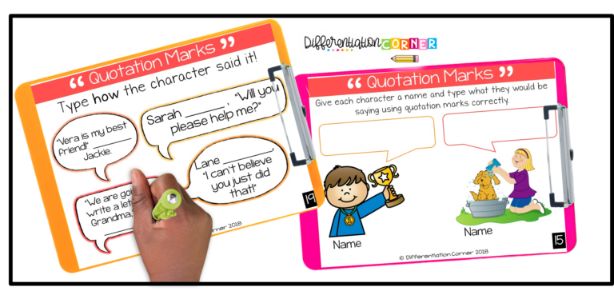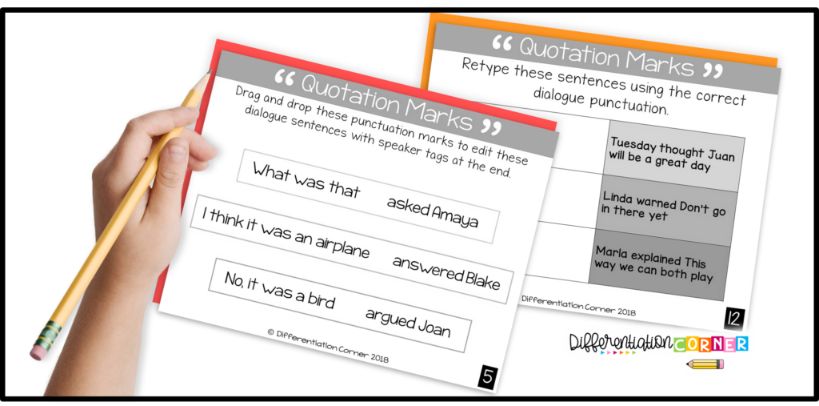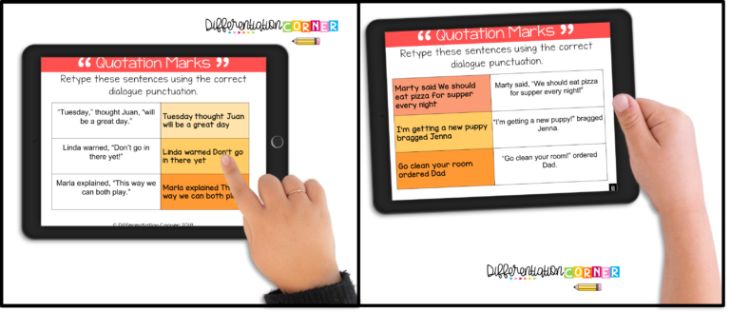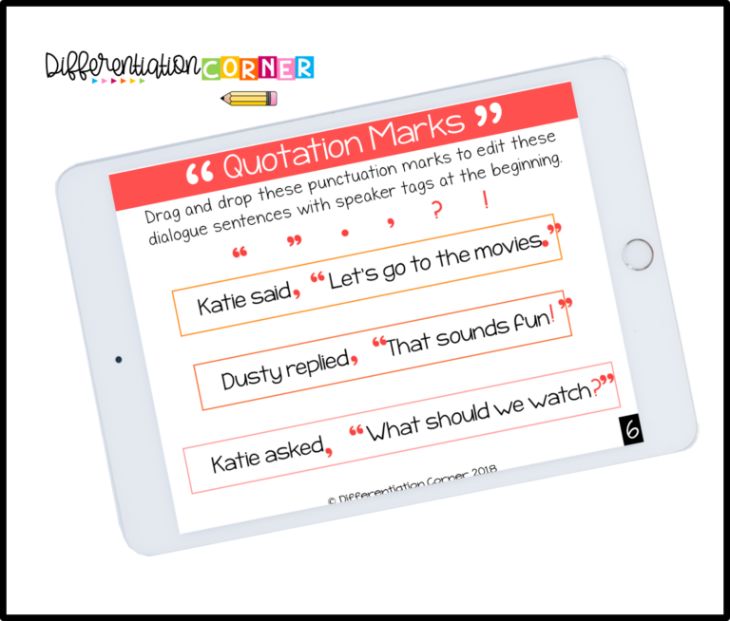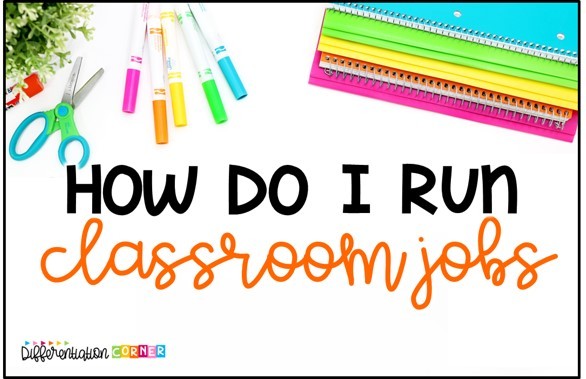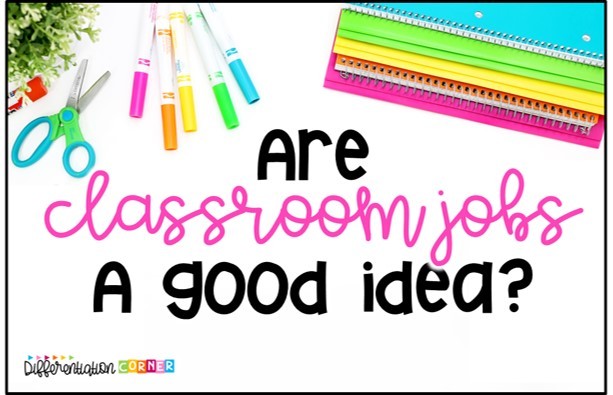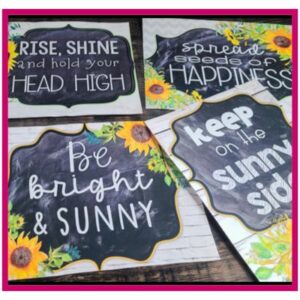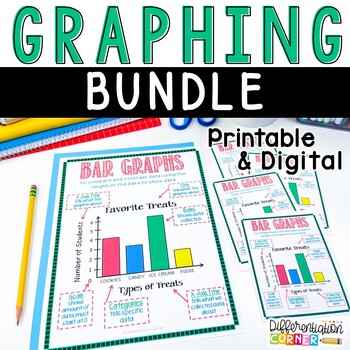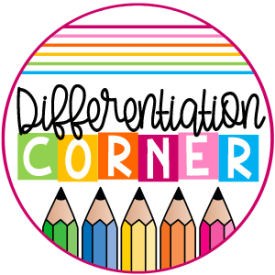My class has been working on a narrative writing project in writer’s workshop. Now we just need to add a little more spice! Whether you teach personal narratives, creative story writing, or historical fiction, it’s the perfect time to introduce writing dialogue in a story. We’ve worked really hard on writing descriptive stories.Dialogue can make our stories more interesting, teach the reader about our characters, add to the mood of a story and help move our story plot along. But how in the world do you teach dialogue punctuation rules to your students?
I have gathered some of the best ways to teach punctuating dialogue in 3rd and 4th grade and shared them in this blog post! The rules for using quotation marks in dialogue can be tricky for elementary students, so they will need a lot of modeling and practice! The best part is that you can use these as mini dialogue lesson plans to supplement any writing curriculum!
But how do you explain dialogue to a child?
I use this anchor chart to talk about what dialogue is and when authors use it in writing. It’s also important to define quotation marks at this stage as a type of punctuation that authors use. I explain it as marks we use that go around the exact words or sounds that characters say or anything that a character thinks aloud.
Introducing Dialogue Punctuation in Elementary
A good place to start when introducing dialogue in narrative writing is the basic vocabulary students will be using. Knowing the correct terminology will help your writers be more confident when writing dialogue in a sentence. I use this writing anchor chart I created that explains speaker tags in dialogue. Speaker tags can go at the beginning, middle or end of dialoge sentences. Speaker tags in the middle always seem to give my students more trouble, so I give more examples of those if necessary. I printed out the anchor chart and had them glue it into their writing notebooks.
Students work on identifying the speaker tags in examples of dialogue sentences. They can do this in small groups, with a partner, or independently. I use this resource. I quickly assign the slides in Google Classroom with the dialogue anchor chart.
I have also printed the slides out and had them use highlighters to find the speaker tags in sentences with dialogue. Identifying speaker tags in dialogue is usually the easy part for my elementary students.
How to Teach Punctuating Dialogue
Teaching elementary students how to use quotation marks in dialogue can be so tricky! I teach the rules of dialogue punctuation using this writing anchor chart on my whiteboard. Then we glue the dialogue rules anchor chart into our writer’s notebook so we can refer to it during independent writing.
Here are the main dialogue rules:
- Start a new paragraph and intent each time a new character talks.
- Use quotation marks around words the character is actually saying or thinking.
- Capitalize the first word inside the quotation marks.
- Always put punctuation inside the quotation marks.
- When you use quotation marks, you’re probably going to need a comma somewhere!
To apply their new knowledge, I created these slides with dialogue examples for students. This gives students hands on practice punctuating dialogue in a variety of ways. I model dragging and dropping the quotation marks, commas and other punctuation marks to the correct places in the sentences in a whole group on my white board. Then, I assign a few slides for them to complete with a partner. Then I assign a few more for them to complete independently. A few of the slides can be printed out and used as a worksheet. I remind students to use their anchor charts when they’re working.
If we have time, I allow students to share their dialogue examples with the class. The confident writers will get a chance to look back over their writing, and the reluctant or struggling writers will get to hear more dialogue examples. Its a win win for the class.
Time to Add A Little Razzle Dazzle to Our Dialogue
I do a mini lesson to teach synonyms for said so our dialogue is more exciting. I created this little anchor chart (in the interactive writing notebook pictured above) that has examples of other words for said to get them thinking. We glue it into our writing notebooks towards the top of the page. Next students look through some free reading books in their book boxes to find more synonyms for said we can add at the bottom of the page. They love this part! They could literally go on for an hour looking for words to replace said in dialogue sentences! I love listening to them find dialogue in a sentence. The gasps! The squeals! Teachers live for these moments!
How To Teach Using Dialogue in Stories Effectively
Students can most definitely overuse dialogue in a story! We don’t need to include the entire conversation between characters. That can be really confusing for our readers. I tell my students that authors use dialogue to help develop the story with important details like feelings, thoughts, and events. Good authors use dialogue in a meaningful way that adds to the story.
By now you know that teaching writing is one of my favorite things. I love teaching descriptive writing, opinion writing, and informational writing. What’s one of your favorite ways to teach writing?
